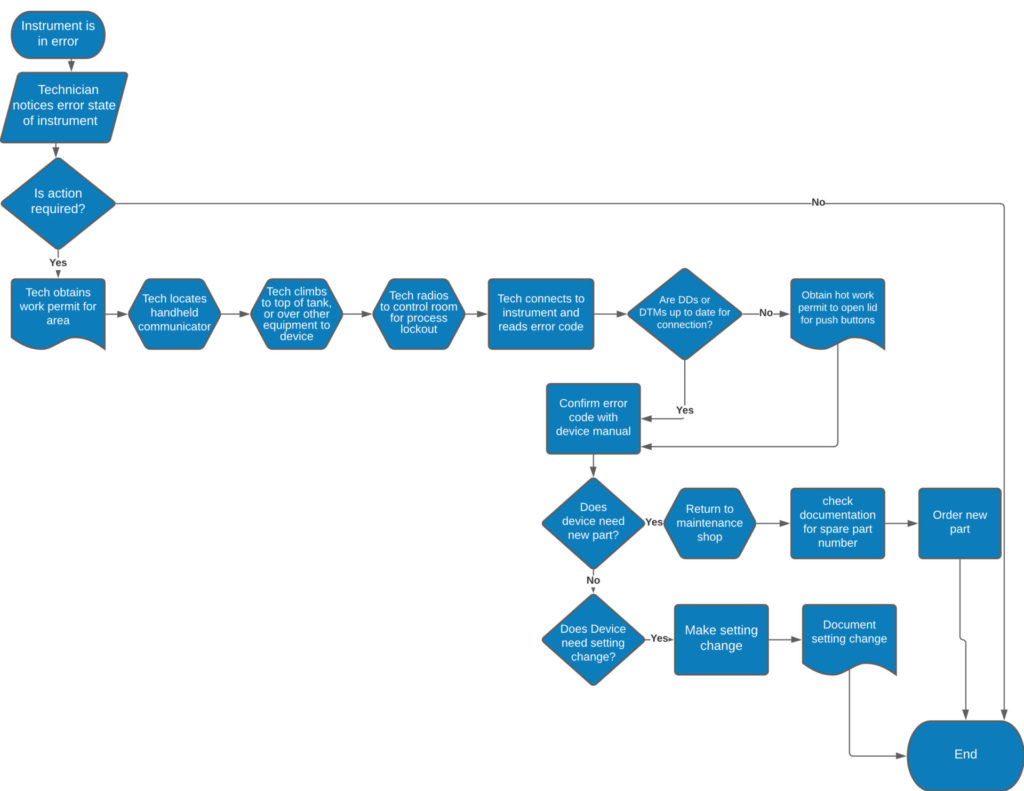Q&A: Achieving simplicity with ModuLine’s easily configurable options
Endress+Hauser’s new and improved iTHERM ModuLine product portfolio is suited for customers in the Chemical, Oil & Gas, Water/Wastewater and […]
In a world with more and more options, it’s not unusual to face decision fatigue. You may feel it while staring at a wall of cereal options at Kroger or while scrolling through phone case options on Amazon. The same can be felt while trying to decide which apps to use for your maintenance and monitoring processes.
Today’s end users have more widgets, tools and innovations than ever before, but it can be hard to find the right option. And who wants to cypher through another PowerPoint slide or webpage from a supplier highlighting features and benefits?
One frame of mind that we’ve found to help distinguish the true value of an app or new technology is to ask whether the product will simply and safely improve productivity. What do we mean by that? Well, users have many concerns with respect to their processes, but most can be boiled down to safely and simply improving productivity. These needs are interconnected and provide a solid basis for product selection and deployment. So with that in mind let’s look at some examples.
We’ll start by using Endress+Hauser’s SmartBlue app as an example for improving level instrumentation. The SmartBlue app for Android and iOS is designed to run on smartphone and tablet mobile devices and can be used to monitor and verify calibration and status for level and other instruments. This provides the functionality required for predictive maintenance to prevent downtime.
By using the app’s Bluetooth connectivity to an instrument, technicians can access hard-to-reach devices up to 30 feet away, such as a level instrument mounted on the top of a tank. Visibility is clear on the mobile device even in low lighting, which is not always the case when trying to read an instrument’s nameplate, especially from a distance. This functionality eliminates the need for a man lift in certain cases, decreasing fall risks and job site accidents.
The flow chart below can be followed by a technician using hardwired connections to a level or other instrument – but it’s safer and simpler to use an app. With an app there is no need to open electrical panels or remove housing covers to access the instrument and connect for diagnostics, troubleshooting or commissioning.

Bluetooth communications also eliminate the need for handheld communicators, which require their own maintenance, along with downtime for firmware and software updates. Replacing communicators with mobile devices cuts costs and allows technicians to work with familiar technology. These are the things we would look at and expect for simplifying a process. These are some examples of things that simplify a process, make it safer and increase productivity – we’re looking for things truly make life easier.
The second example is the SmartBlue app’s commissioning wizards. The commissioning wizards walk a technician through the startup from beginning to end and ensure no part is missed, which is especially important for safety integrity level (SIL) startup and verification. For example, overfill protection is often provided by a level instrument rated for SIL service.
Combined with an onboard monitoring and verification functionality, such as Endress+Hauser’s Heartbeat technology, technicians can see process data and diagnostics in real time and with no measurement interruption. This allows them to perform predictive maintenance — decreasing the possibility of incidents due to equipment failure or product contamination — while improving productivity.
In a food and beverage processing plant, for example, this means not having to deal with ramifications due to quality issues from failed instrumentation. Product loss is not only a financial burden but can also be a safety concern for consumers, depending on the type of contamination and how much product makes it out the door before the issue is noticed. The effects of contamination can be far reaching, including product recalls and even consumer health issues in the worst case.

While the Endress+Hauser SmartBlue app and Heartbeat Verification were used to illustrate these examples for level instrumentation, the guidelines for safely and simply improving productivity can be used as a standard for selecting and implementing any new instrument or innovation. If a new product can meet this standard, it should be considered, and if it does not it may be just an area to watch for further developments, but not yet ready for prime time.
Purchasing and installing the coolest widget or tool on the market only makes sense if it provides intrinsic value in the manufacturing process. Investment in new products requires a specific need to be met, along with justification for changing standard operating procedures that may have been in place for decades. Before this step is taken, end users must first make sure a pressing problem will be solved safely and simply — and only purchasing if that is the case.
Learn how Bluetooth capabilities can add value to the Water/Wastewater industry!
Endress+Hauser’s new and improved iTHERM ModuLine product portfolio is suited for customers in the Chemical, Oil & Gas, Water/Wastewater and […]
Greg Pryor is the Temperature Product Marketing Manager at Endress+Hauser USA. To help answer some questions surrounding temperature transmitters, we […]
Liquified natural gas (LNG) is a versatile energy source with a growing role worldwide. During custody transfer, quantity can be […]
Comments